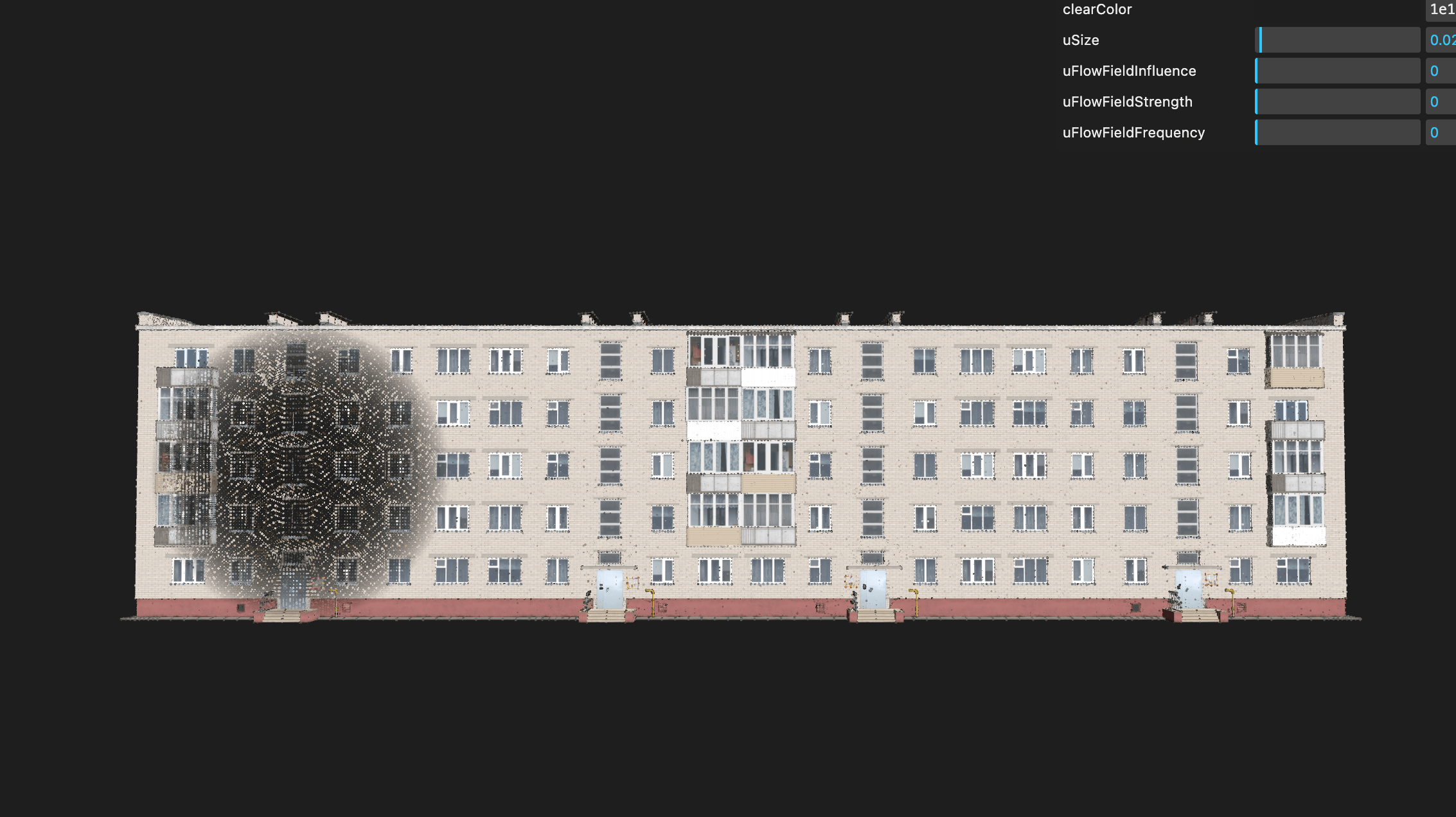
Flow Field in GLSL
This post takes up 3 days – 27-29 Jan, because of slow pace work and lack of time
Sometimes it takes hours just to understand what’s wrong with the .blend / .glb file and to show it in your project… And today is that day. Apart from quite silly “oh I didn’t realize the model is 100 times bigger”, somehow the scene is not rotated(if you just add it to your three js scene), but the geometry attributes are…
After some time we (Ella is saving me with Blender here) noticed that mesh is rotated in blender indeed, however fixing it in blender did not rotate it the correct way in three js. Baking vertex colors also did not go well from the beginning,
So when I at least saw correctly oriented system resembling the house I already was a bit relieved:

Finally, Ella managed to tweak the settings so that she sees texture in “no-texture” preview mode in Blender (that means it’s gonna work for me):

But colors are somehow weird, like extremely low quality texture, when the texture on our original model is quite detailed:
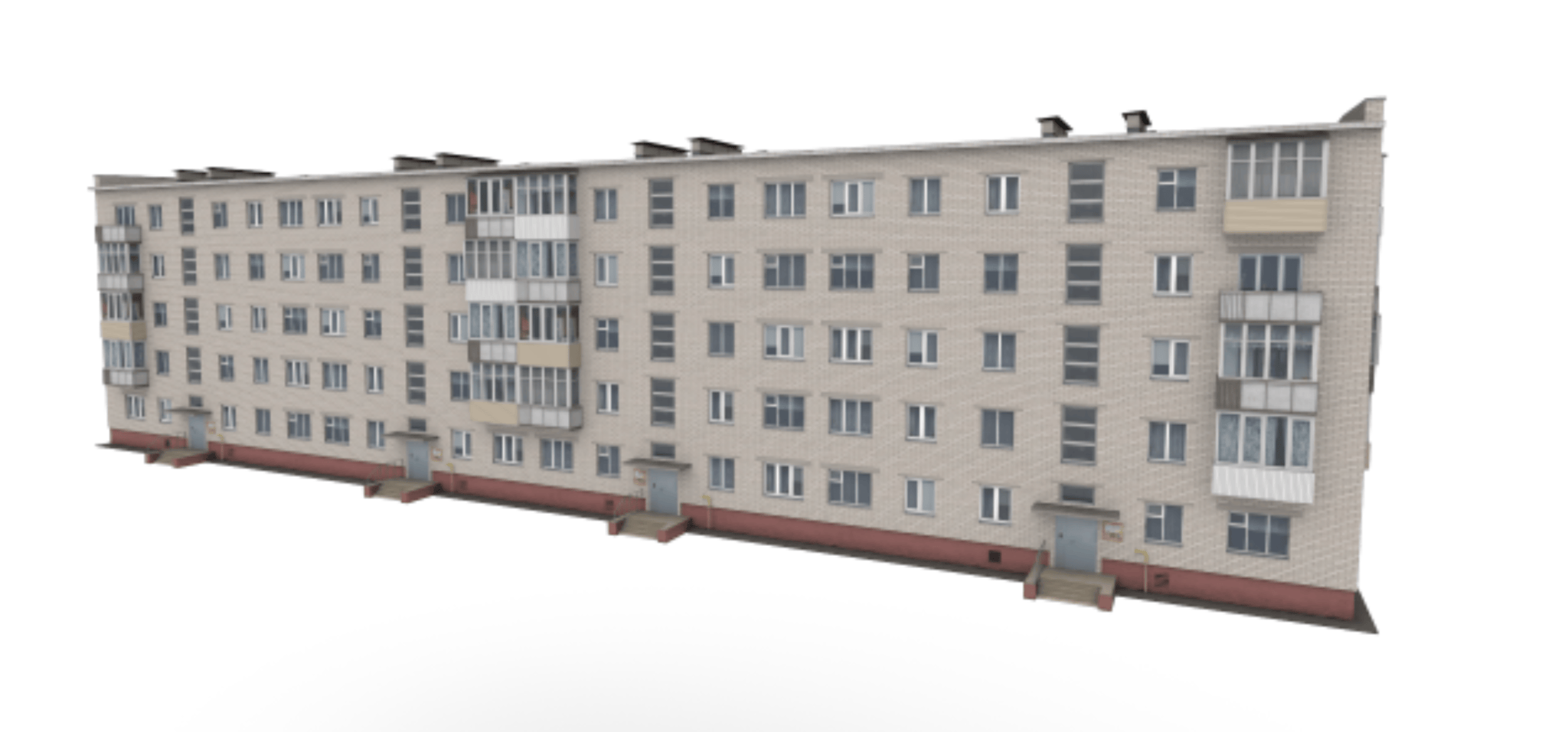 Just got these screenshots from Ella, this is hilarious:
Just got these screenshots from Ella, this is hilarious:
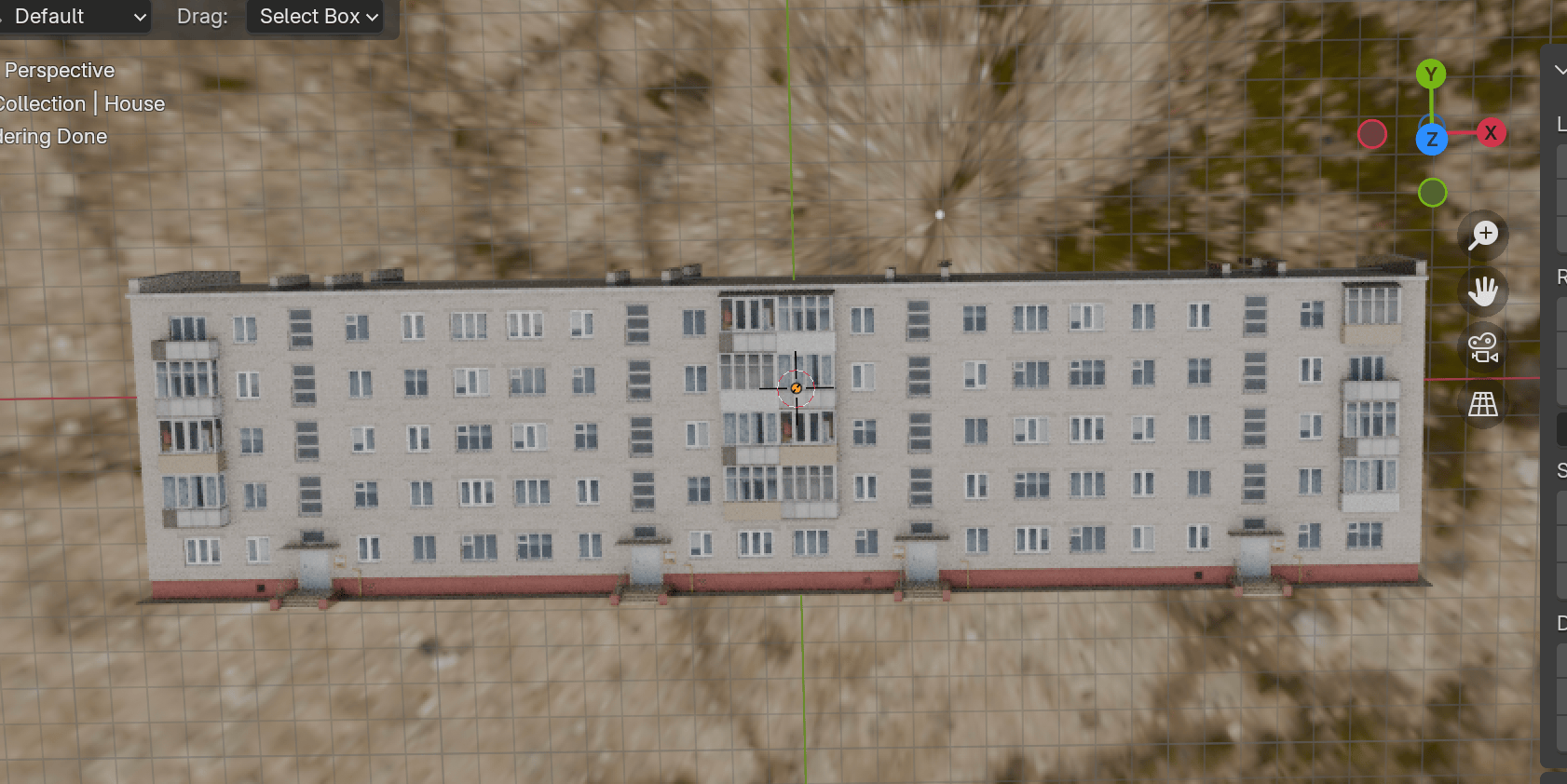
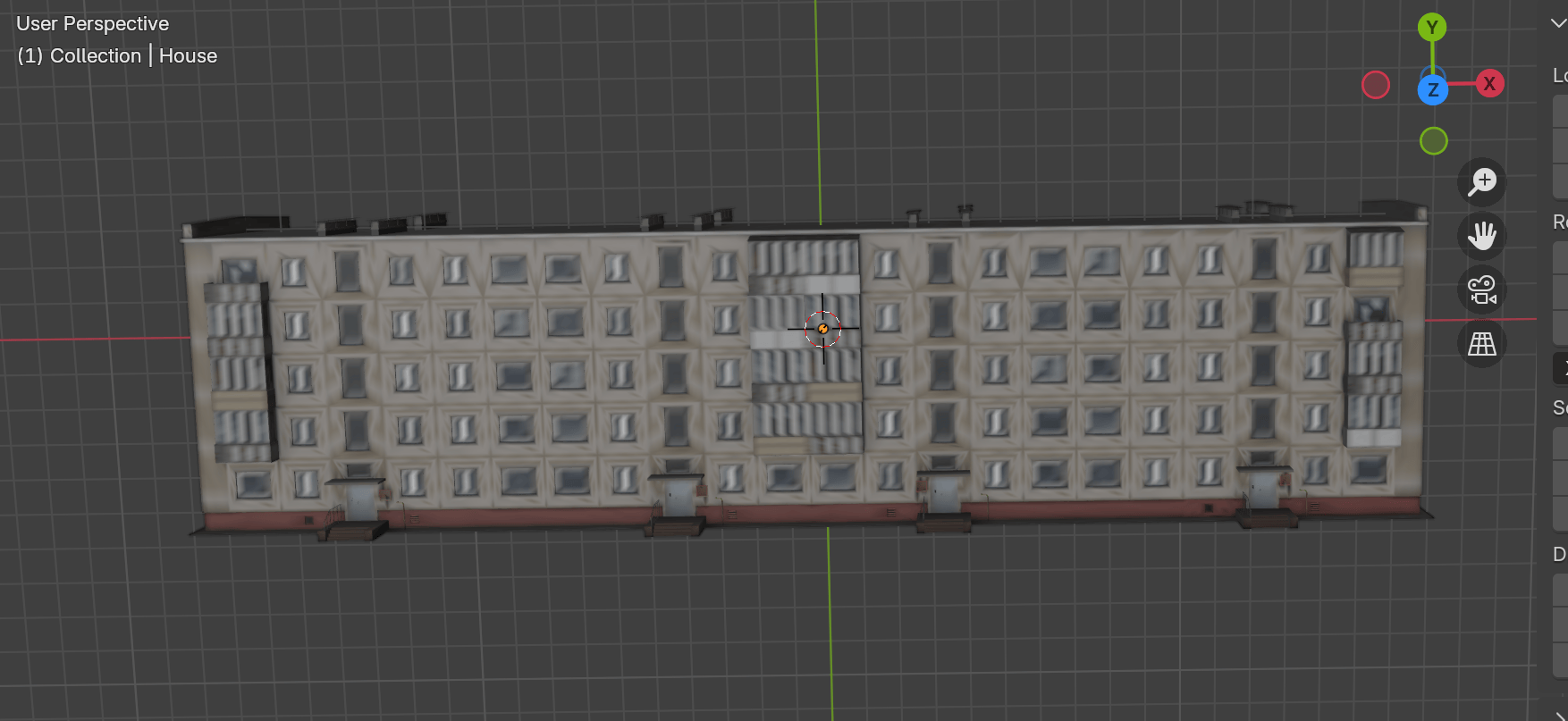
Finally we fixed the colors and while debugging I saw that I like the effect together with the normal model itself:
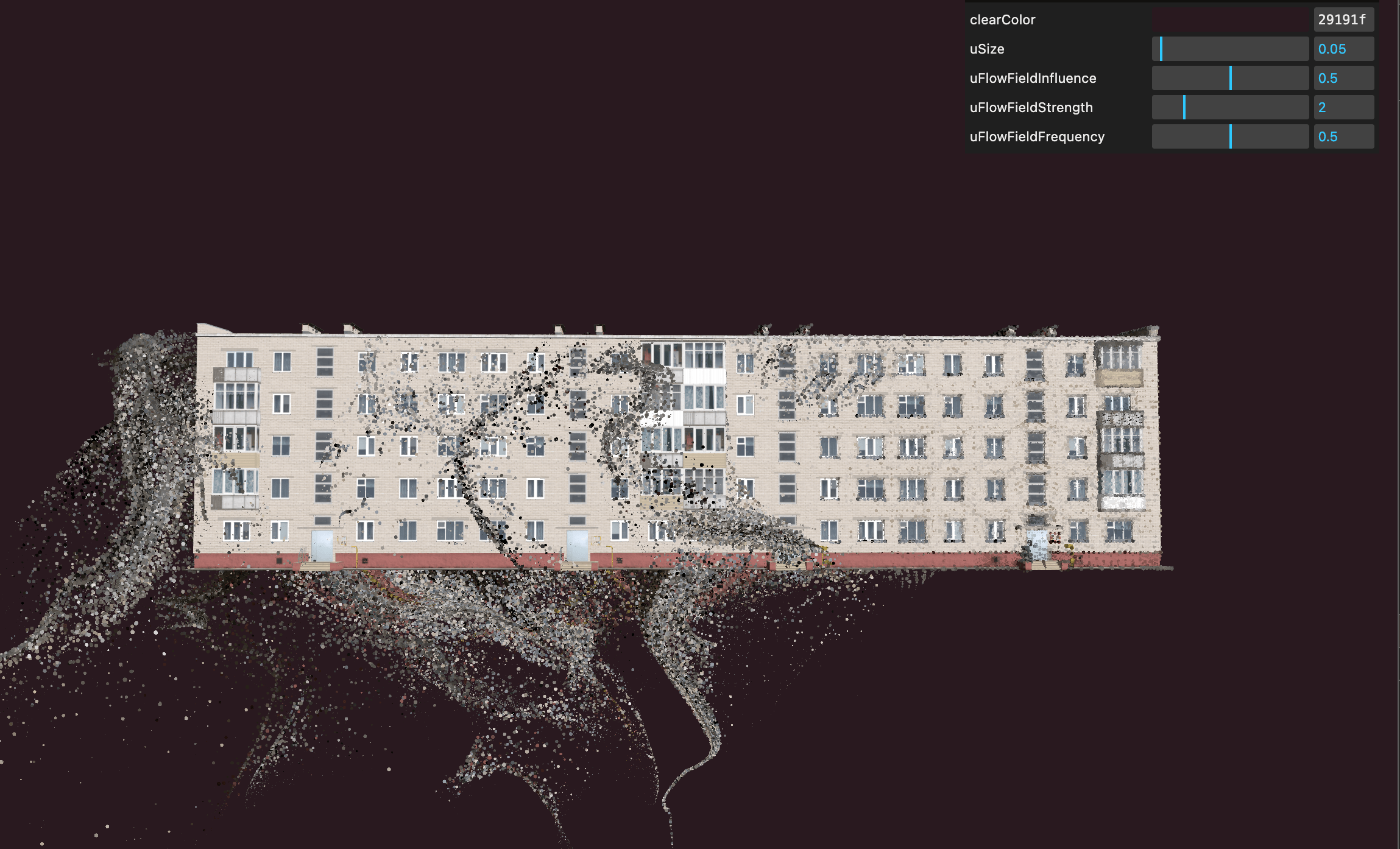 From here I finally can work further with the shader interactions.
From here I finally can work further with the shader interactions.
I started with organizing my code to free up some space.
Every scene I set up canvas, renderer, camera, add resizing eventlistener, so it does not really make sense to keep it with the rest of the logic.
So i’ve put all these “default” functions into utils.js, with the option to use or not to use OrbitControls and the color of clear canvas:
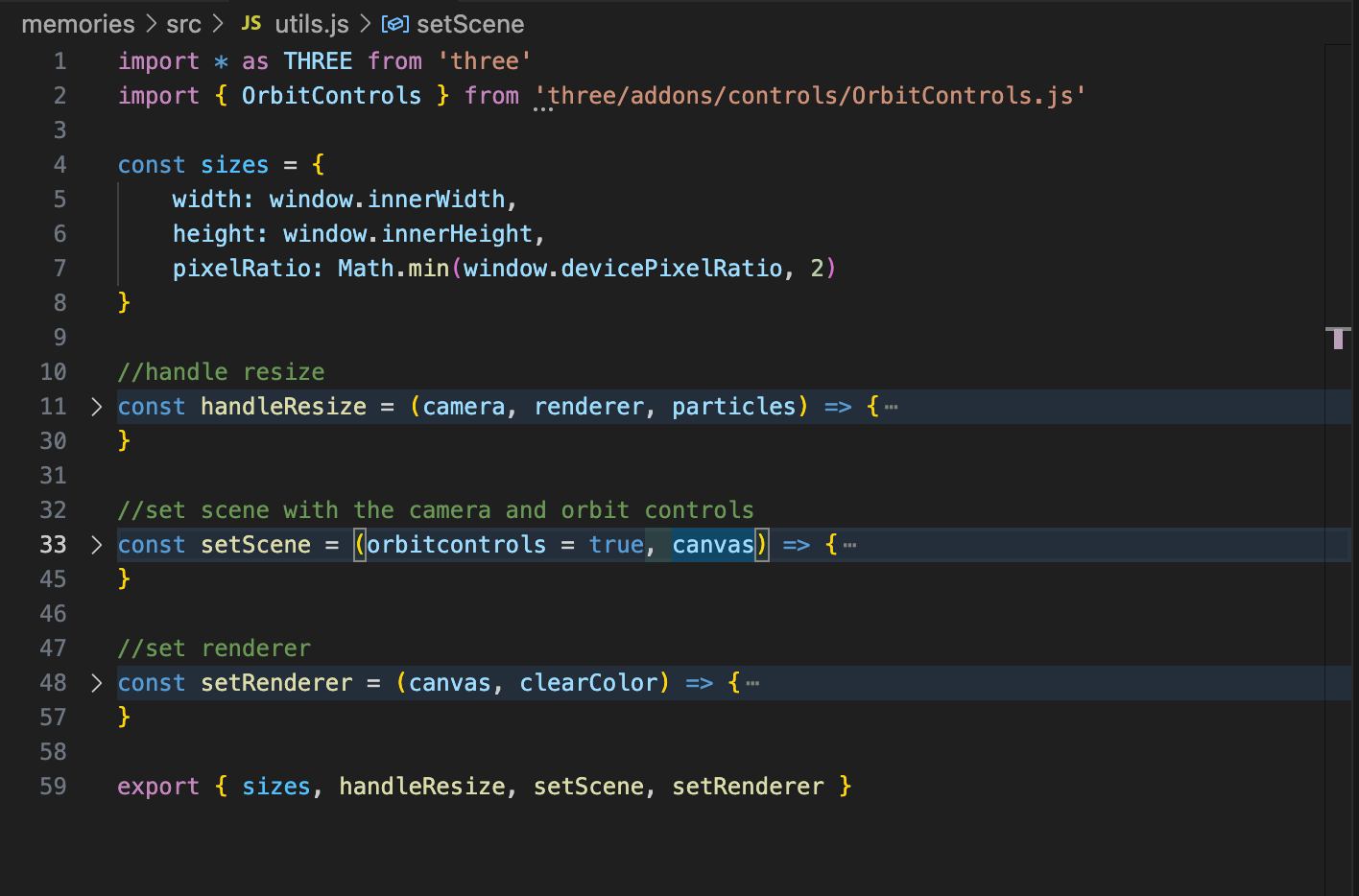
Okay, so to combine real model and particles, first I will write a shader for the model to hide its material on hover. I’m going to extend existing material using custom shader material.
as always, first we just check that nothing broke:
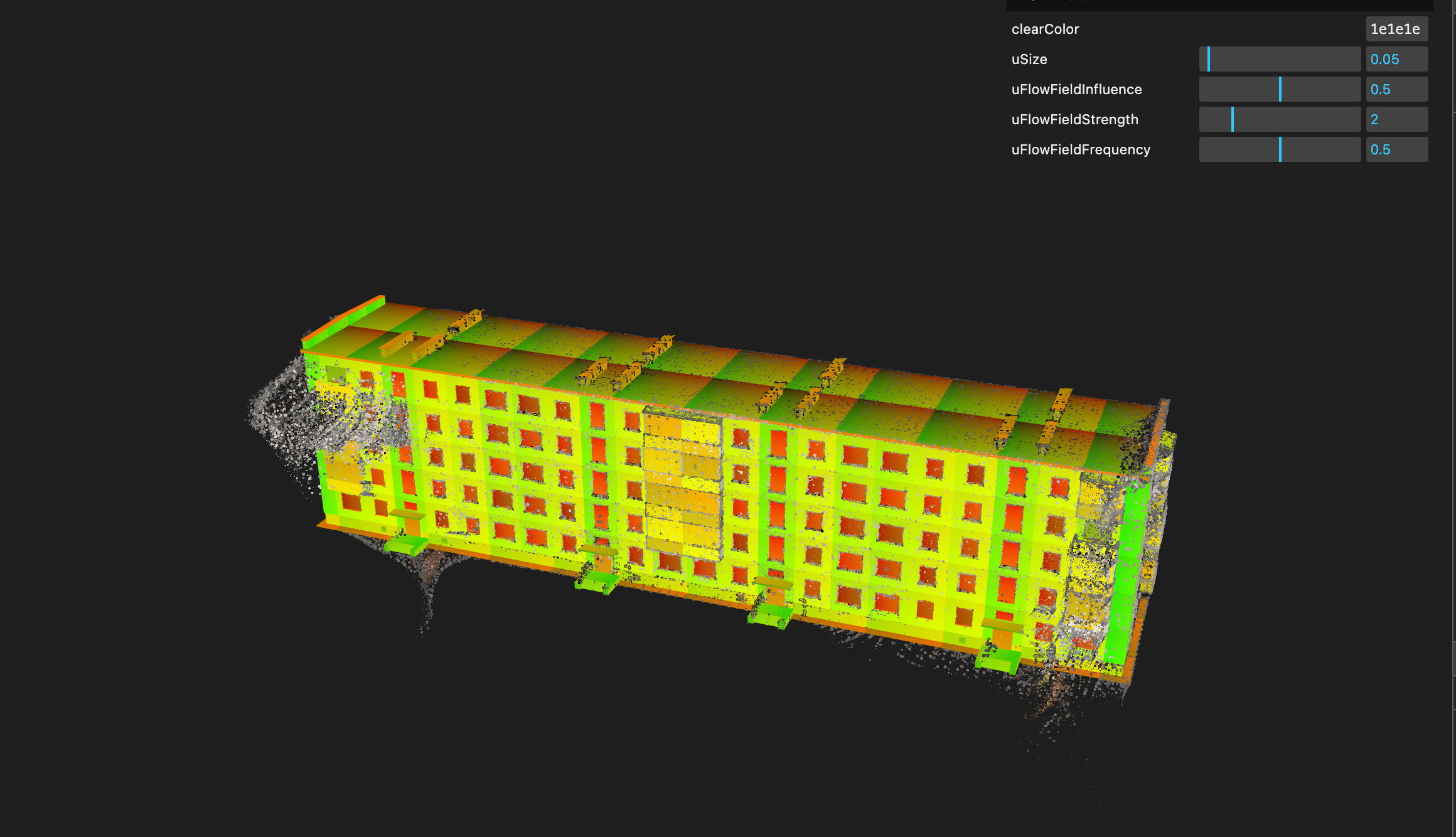
Then I tried to get the starting color and noticed that if I call the initial color from shader, it’s just grey…
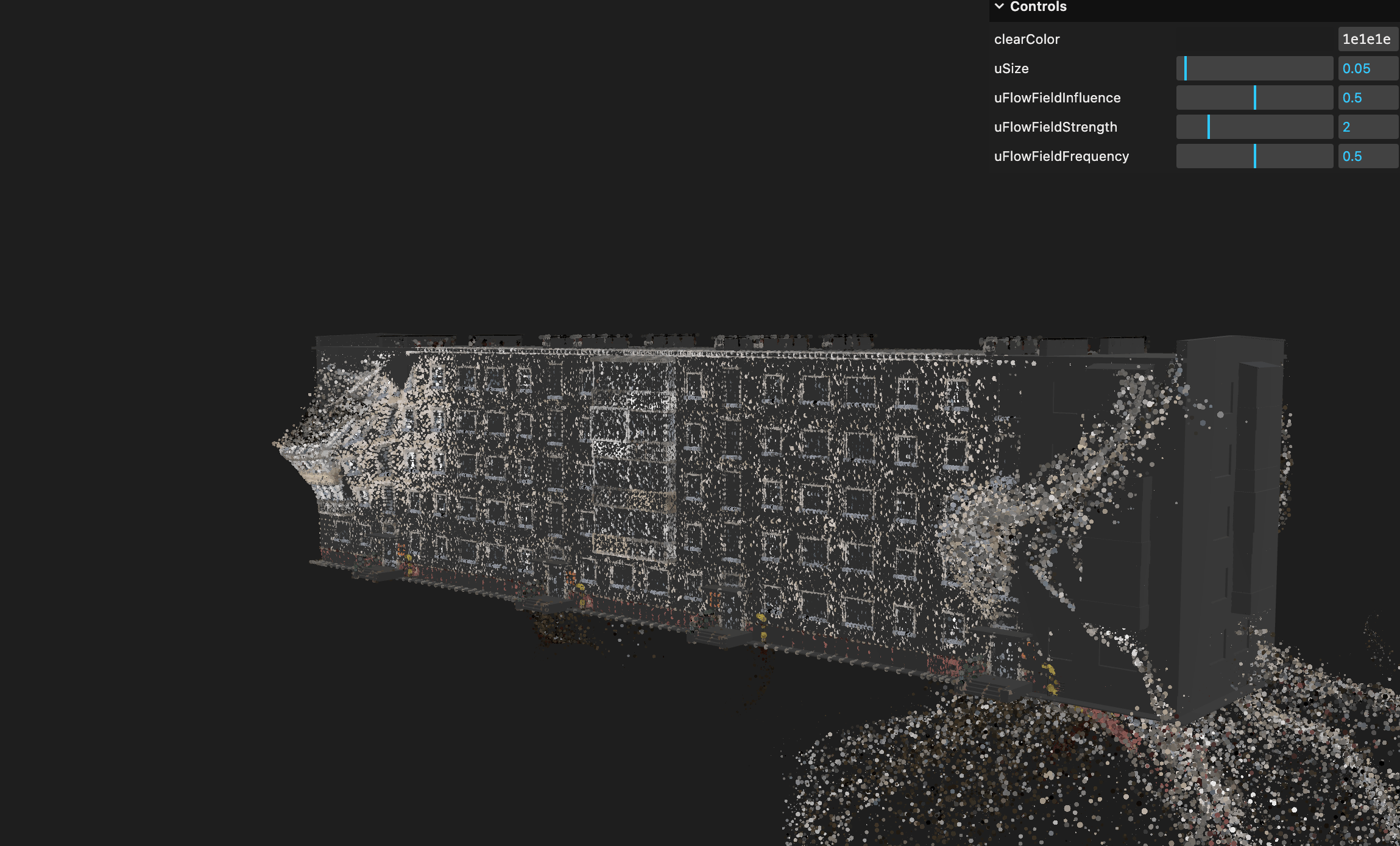 frag sgader:
frag sgader:
varying vec2 vUv;
void main() {
//retrievening the original color:
vec3 color = csm_DiffuseColor.rgb;
//NOT USING THIS FOR NOW:
//center:
vec2 center = vec2(0.5, 0.5);
//distance to center:
vec2 distance = (vUv - center);
float length = length(distance);
//alpha based on distance:
csm_DiffuseColor = vec4(color, 1.0);
}
I thought maybe the problem was with not providing the color map, even though it should be baked into model:
// Material
const material = new CustomShaderMaterial({
//CSM
baseMaterial: THREE.MeshStandardMaterial,
map: colorTexture, //I've put this both before and after the shaders to compare
vertexShader: houseVertexShader,
fragmentShader: houseFragmentShader,
// MeshBasicMaterial properties
transparent: true,
wireframe: false
})
But it did not fix the problem, I spent some time trying to understand what’s wrong with the texture or the shader. Then I decided to check what my inital material contains and logged the house’s mesh. The mesh had property map on it:
const map = gltf.scene.children[0].material.map
console.log(map)

So i tried just to reuse this map one more time passing this particular map into the shader:
//setting shader material to the house
gltf.scene.children[0].material = shaderMaterial
//passing initial map as a uniform into the shader material
shaderMaterial.uniforms.uMap.value = map
And it works! Let’s try to make a hole in our material, static first:
uniform sampler2D uMap;
varying vec2 vUv;
void main() {
//retrievening the original color:
vec4 textureColor = texture2D(uMap, vUv);
//center:
vec2 center = vec2(0.5, 0.5);
//distance to center:
vec2 distance = (vUv - center);
float alpha = length(distance);
alpha = step(0.5, alpha);
//alpha based on distance:
csm_DiffuseColor = vec4(textureColor.rgb, alpha);
}
And now I see another weird thing: it does not have just one hole in the middle, but many little holes as if there are multiple UVs that go from 0 to 1…
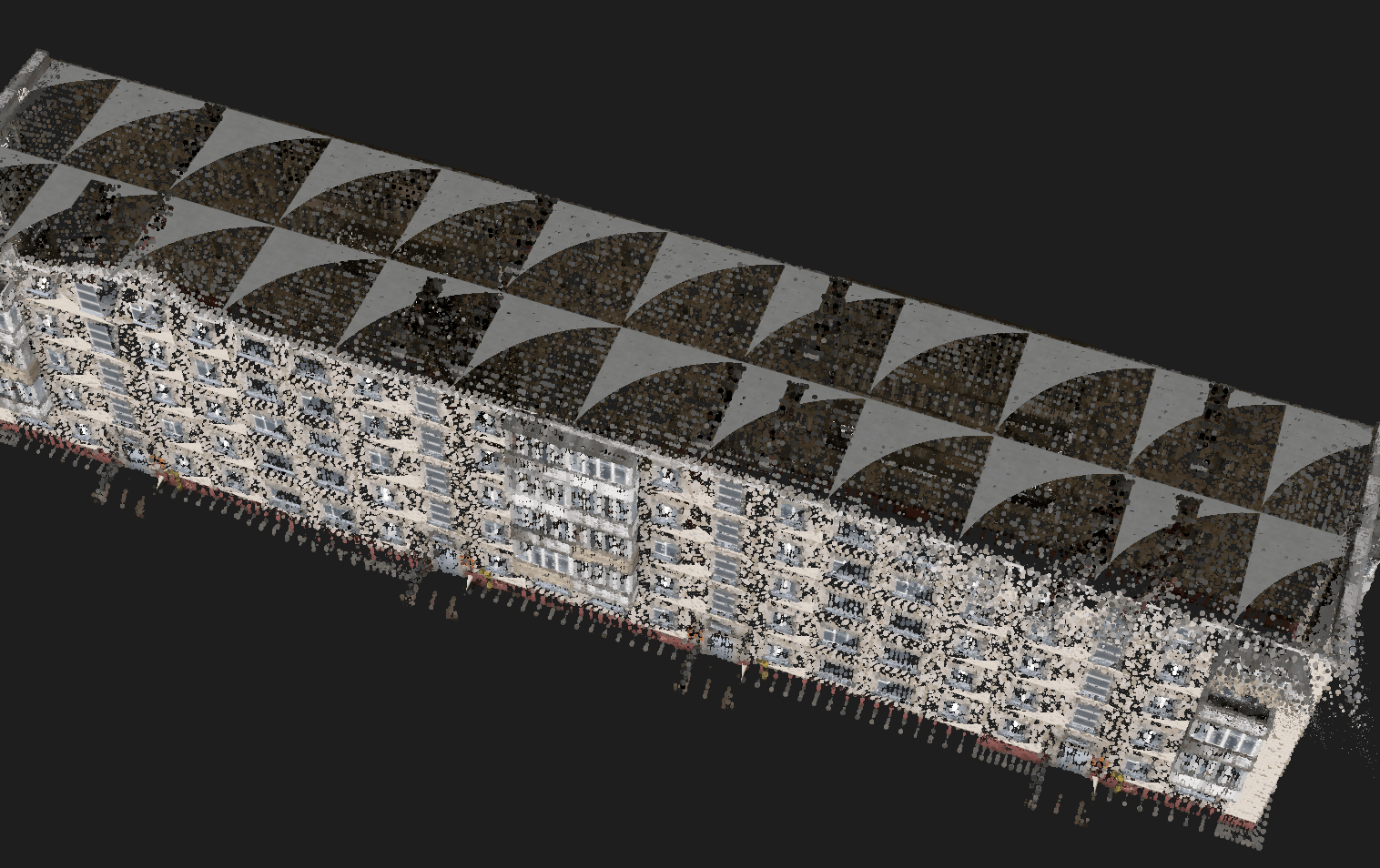 It actually was already visible on previous screenshot with just UV coordinates colors.
It actually was already visible on previous screenshot with just UV coordinates colors.
So we can not rely on UV coordinates, but we can retrieve global position from our vertex shader:
varying vec2 vUv;
varying vec3 vPosition;
void main() {
vUv = uv;
vPosition = position;
}
and then we use it frag shader, both vec2 and vec3
uniform sampler2D uMap;
varying vec2 vUv;
varying vec3 vPosition;
void main() {
//retrievening the original color:
vec4 textureColor = texture2D(uMap, vUv);
//center:
vec2 center = vec2(0.5, 0.0); //for 2d point
vec3 centerRaycastExample = vec3(0.25, 0.0, 0.1); //for 3d point
//distance to center:
//vec2 pos = vPosition.xz; //for 2d point
// float distance = length(pos - center); //for 2d point
float distance = length(vPosition - centerRaycastExample); //for 3d point
float alpha = step(1.0, distance);
//alpha based on distance:
csm_DiffuseColor = vec4(textureColor.rgb, alpha);
// csm_DiffuseColor = vec4(vUv, 0.0, 1.0);
}
And we got this beautiful hole:

Here I will stop for this post as it was more about just getting the basic setup, and continue with actual shader from another post!
